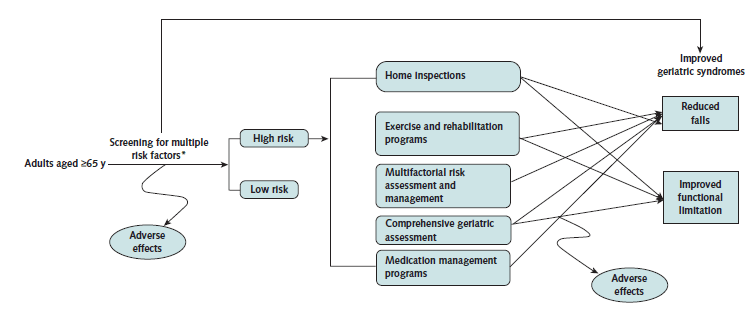Example of the ideal analytic framework for geriatric topics.

* Risk factors include increasing age, baseline functional impairment and limitations, incontinence, polypharmacy, medical risks, or sensory and cognitive deficits.
Figure 1 is an ideal geriatric version of the analytic framework that the U.S. Preventive Services Task Force uses in its systematic reviews. This version represents an approach to identifying high-risk patients with common risk factors for one or more geriatric syndromes, who could receive one of several interventions developed to reduce geriatric syndromes and related outcomes (such as falls or functional limitations), some of which could benefit more than one outcome. The patient population undergoing screening for multiple risk factors is adults aged 65 years or older. Risk factors include increasing age, baseline functional impairment and limitations, incontinence, polypharmacy, medical risks, or sensory and cognitive deficits. The interventions for high-risk older adults includes: home inspections, exercise and rehabilitation programs, multifactorial risk assessment and management, comprehensive geriatric assessment, and medication management programs. The intermediate outcome, which is used to determine if the intervention is effective, is improved geriatric syndromes. The health outcomes include a reduction in falls and an improvement in functional limitations. Other positive outcomes include a reduction in fear of falling and improvement in balance, gait, and mobility measures. Adverse effects of screening and the interventions are also represented in the framework.
Current as of: December 2010
